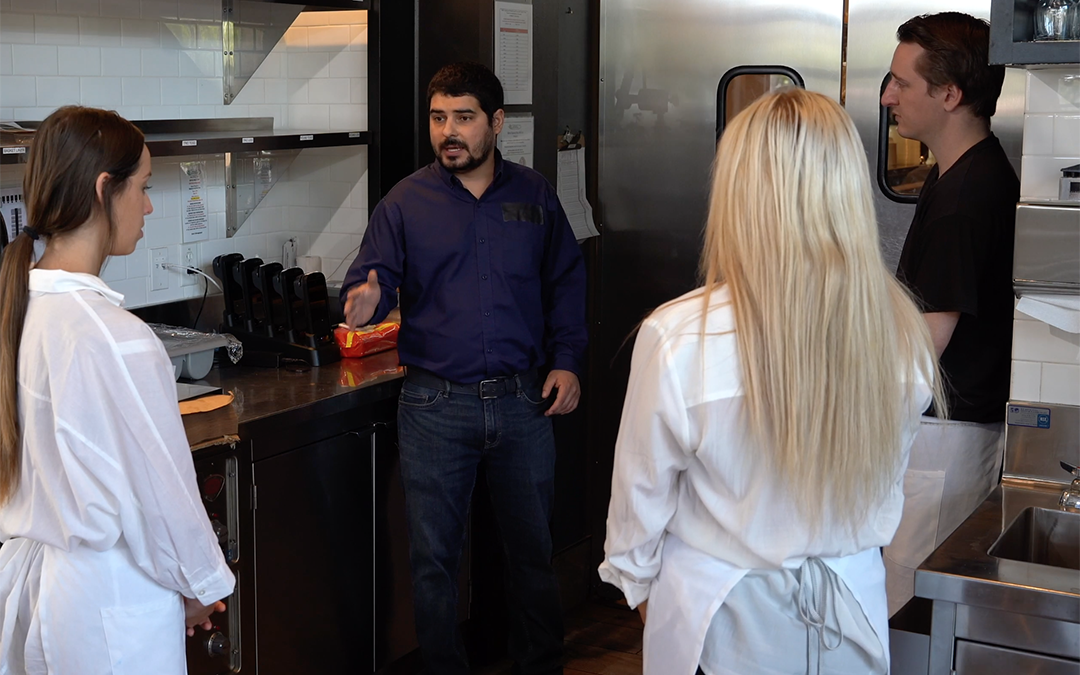Create a positive dialogue with and engage your employees – it’s pivotal to keeping good employees and well worth the effort.
Right now, 1 in every 4 service workers want to quit their job. And when they do, they won’t give you notice, they’ll quit because they thought you were never listening and weren’t going to listen to them.
With the “Turnover Tsunami” currently facing the restaurant business, restaurant owners and operators need to do more than ever to keep good employees. But how do we retain the best restaurant employees?
Well, there are tried and true methods (we’ll will go over 7 of them here) that will help you promote loyalty and create long-term employees. Plus, these same strategies will help you build and maintain your restaurant’s culture while teaching new staff members the ropes.
1. Recruit the Talent
Don’t wait for good employees to find you. Partner with culinary schools, job fairs, and recruiting events to find the best employment fits for your restaurants. Actively recruit talent with referrals and in-store messaging.
Finding your team this way has many advantages. In fact, referrals stay longer and are more engaged. (Hint: Referral bonuses can also incentivize your best employees to bring in people that fit with your existing culture.)
2. Streamline The Hiring Process
Getting the right people in the door is crucial to retaining your best employees. So break the cycle of hiring whoever walks in – this is why your turnover rate is so high!
Find a hiring process you can afford and optimize it. Whether it’s training a member of the team who will be given the time to interview properly or using an outside agency. Either way, it’s important to keep your work culture and your existing team members in mind, and make them an active part of the process.
3. Give the Best to the Best
Recognize hard work and reward it. Take the time to learn which members of your team are going the extra mile – know their names. Make them feel valued and seen. This encourages the rest of the team to grow and push themselves further, as well.
4. Create Full-Time & Flexible Schedules
To create a cooperative, familial work environment, your employees can’t be competing for the best shifts. Rotate the most desirable shifts among them. If your employee can’t get the hours they need (or hours they want) at your restaurant, their second job will undermine their commitment to your restaurant. Give your employees full time hours and be flexible, it goes a long way to reducing turnover.
5. Give Health Benefits
Employees today have plenty of options. If you don’t offer health benefits, it’s going to be incredibly difficult to retain the best employees long term. Sure, there are many challenges to providing health benefits, but it’ is doable.
Consider it part of your labor costs and build it into your financial plan to offset the costs. There are plans made specifically for this industry. Check some out options from The National Restaurant Association.
6. Feed Your Staff
Working in a restaurant works up an appetite. The fast pace, the constant exposure to amazing food – it’s bound to makes you hungry. Offer your restaurant employees a pre-shift meal and send the staff home with the extras.
Satisfying your staffs physical needs sends the message you take care of your people and gives them a greater appreciation for the food offered at your restaurant – and makes your staff more engaged with the team and restaurant’s success.
7. Propagate the Work Culture
There are so many elements and ways to create good restaurant work culture. One aspect is creating work life balance. Creating purpose from the work your team is doing. Building the interpersonal relationships within your team. None of these things cost your restaurant a penny, but they all add value to it.
By implementing these retention strategies into your business, your best employees will stay and your mediocre employees will become better.
EyeSpy can help you build a retention program that solves your labor problem. Invest in operational development for your restaurant and you’ll find that many problems fix themselves on their own.
Share this

